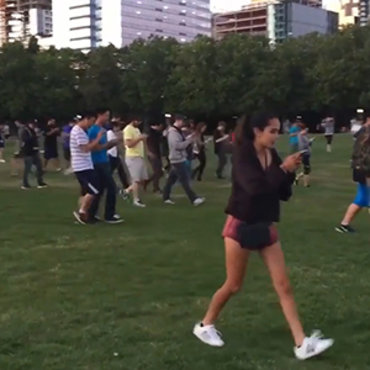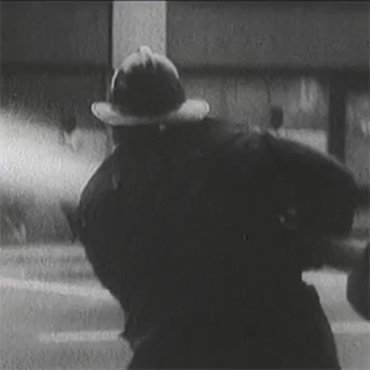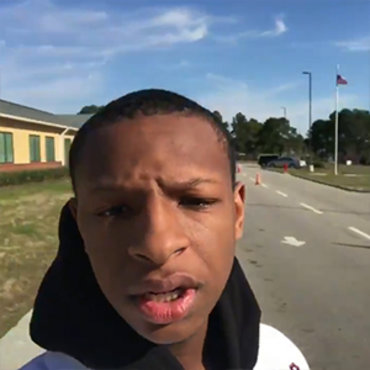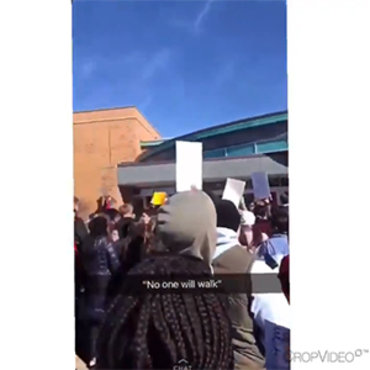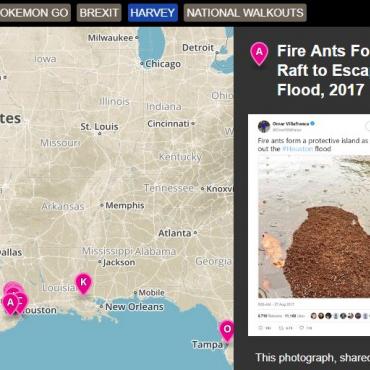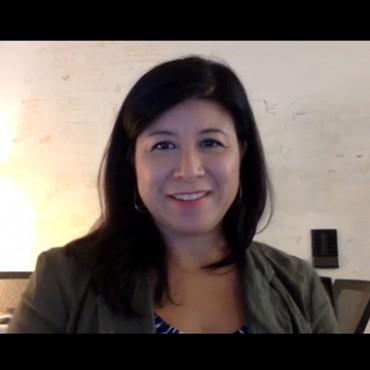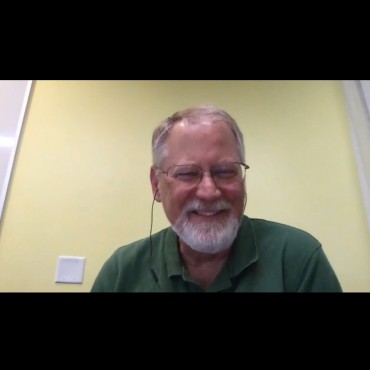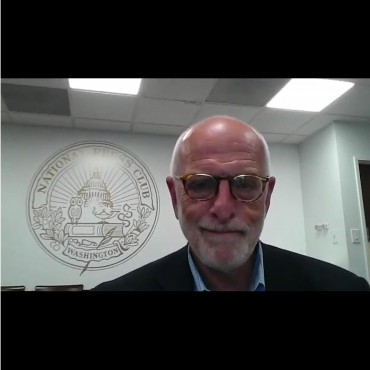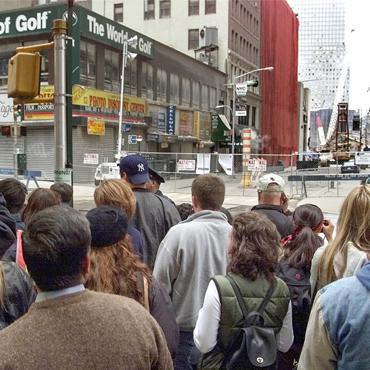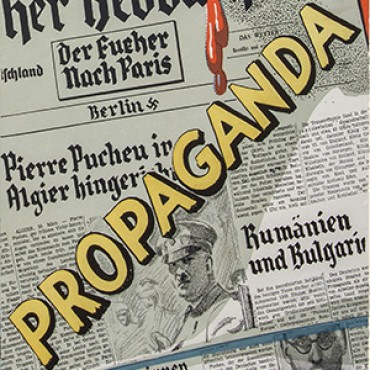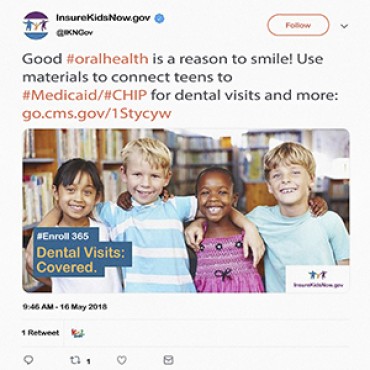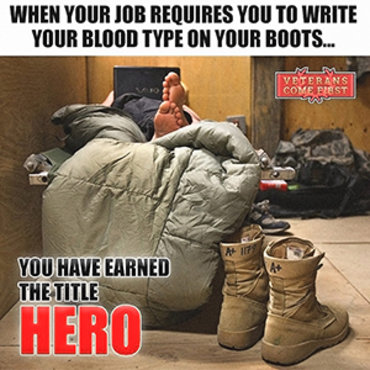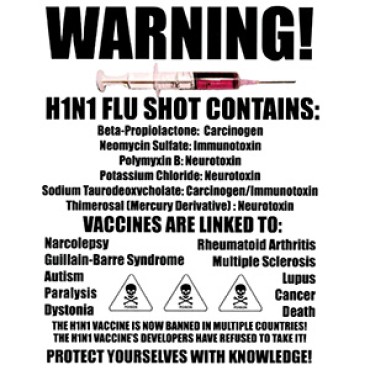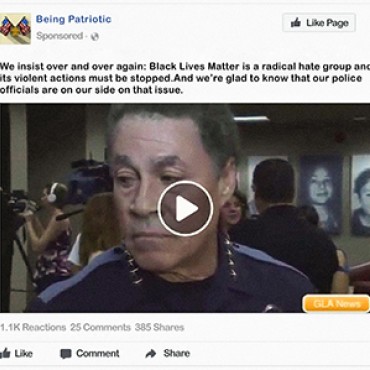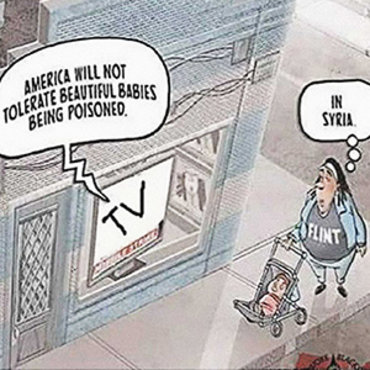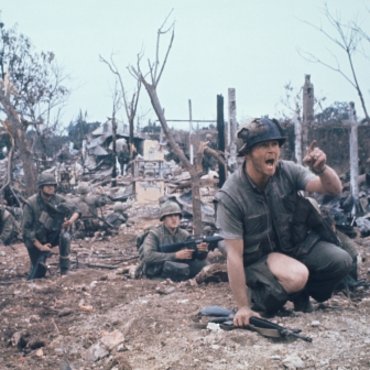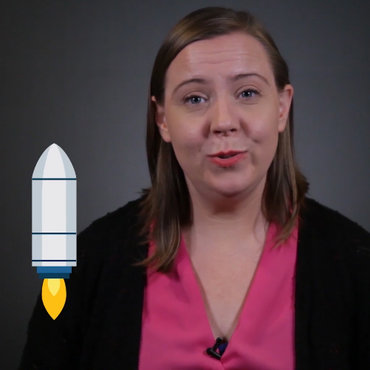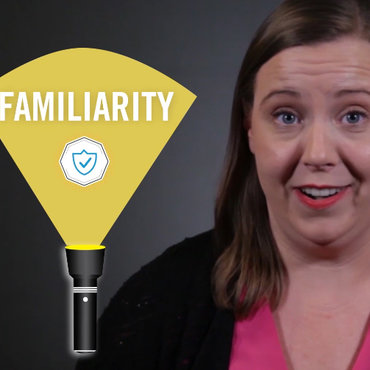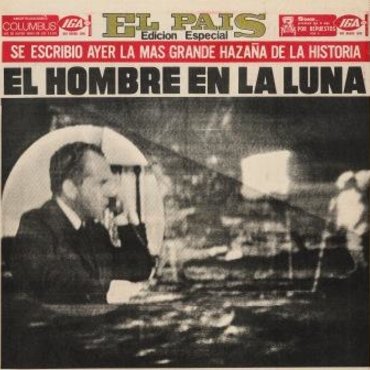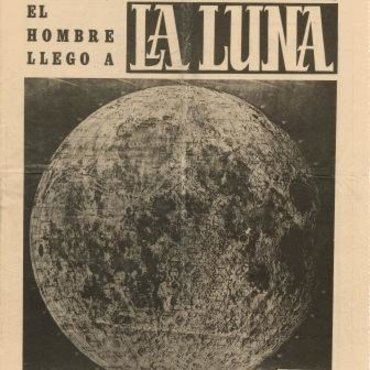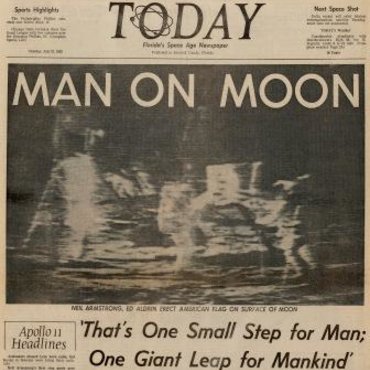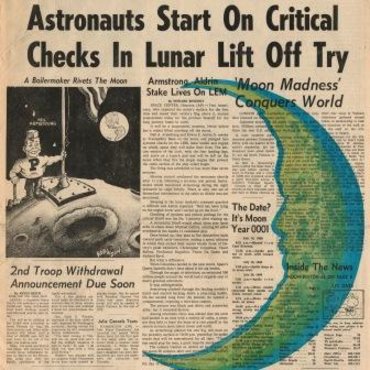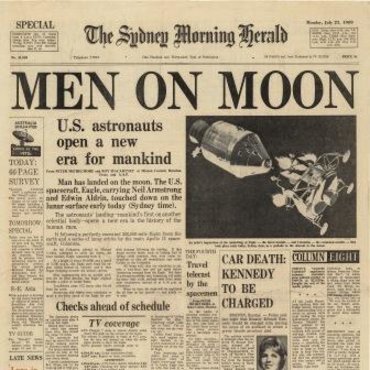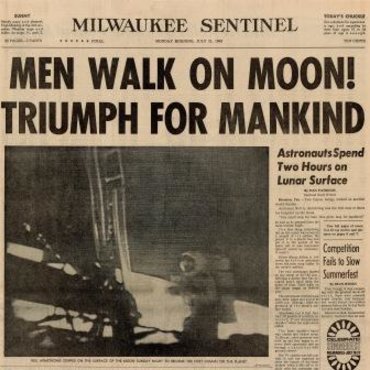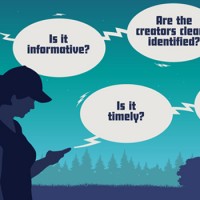
Is It News?
A simple flowchart and video explain how to differentiate news from other types of information; then students put their news-spotting abilities to the test.
Get even more great free content!
This content contains copyrighted material that requires a free NewseumED account.
Registration is fast, easy, and comes with 100% free access to our vast collection of videos, artifacts, interactive content, and more.
NewseumED is provided as a free educational resource and contains copyrighted material. Registration is required for full access. Signing up is simple and free.
With a free NewseumED account, you can:
- Watch timely and informative videos
- Access expertly crafted lesson plans
- Download an array of classroom resources
- and much more!
- Current Events
- Journalism
- 7-12
Are your students savvy searchers? Can they spot the difference between a straight news article and an opinion piece? Do they recognize bias in their sources … or in themselves?
You are in one of Fact Finder: Your Foolproof Guide to Media Literacy’s 11 flexible, multimedia lesson plans to tackle these challenges. Eight skill-building lesson plans introduce essential media literacy concepts through engaging explainer videos and colorful infographics that help students revisit, retain and apply the key concepts. The accompanying News or Noise? Media Map provides a collection of examples ready for students to analyze and evaluate with the support of worksheets and discussion prompts. Three reporting lesson plans help students take what they’ve learned and apply it to their own content creation, inspired by the issues that matter to them.
Adapting Fact Finder for Your Classroom
FROM KEY IDEAS TO COMPLETE CURRICULUM
Polish one particular skill or take your students on a comprehensive journey from news novices to media masters. We designed this suite of 11 lesson plans and their corresponding resources to be used either as a complete curriculum or individually. There’s also flexibility within each lesson plan to complete the whole thing or choose individual resources and smaller activities.
Building New Skills and Ideas
Each lesson plan’s format is inspired by the 5-E’s constructivist instructional model (engage, explore, explain, elaborate, evaluate). For students new to media literacy or news consumption, the opening “engage” activity along with the explainer video and infographic may be enough to build their awareness of key concepts. More advanced students can put these concepts into action as they navigate the News or Noise? map with the help of worksheets to guide their application. Those who have already developed their media savvy can still be challenged to elaborate by applying the infographic tips and methods to the boundless content available online.
A Cross-Disciplinary, Standards-Driven Toolbox
No matter what subject you teach, bringing elements of media literacy and journalism into your curriculum can benefit your students and help you meet standards, including Common Core requirements for analyzing sources, creating content and using non-print texts. Media literacy empowers students to conduct better research and make better arguments, whether the topic is the Civil War or the biological impact of GMOs.
The challenges today’s media landscape poses for our students — and for all of us — can be daunting. But we hope this collection of content provides an approachable way to help your students hone their ability to find quality content and begin creating their own to share with the world.
— The NewseumED Team
- Ask your students: Why do we need news? (Prompts include: What would happen if you couldn’t access news of any kind? What if you: Were going to buy the latest phone and missed the news that the popular model was badly made? Got dressed for the day and didn’t know about the upcoming blizzard? Wanted to join a community rally and didn’t know that the location had changed?) Explain that getting an accurate, clear and timely explanation of the world around us helps us understand communities (ours and beyond). It also helps us make better decisions about how we spend our time and money, what we value, and what we support.
- Discuss some examples of what’s in the news now. Encourage them to think of issues or events using prompts about the latest in politics, current events, technology, music, sports, etc.
- Select one of their given topics. Tell students you’re going to test if they can tell the difference between news and the other types of content in the information universe. Distribute the News or Not Sorting Sheet worksheet. Have them label the stories as news or not and discuss how they made their determinations.
- Acknowledge that it can be tricky to figure out how to identify quality, credible news. It becomes especially hard when it’s published online alongside rumors, opinions, ads and more. It boils down to five key characteristics. To learn about these five things to look for, watch the “Is It News?” explainer video and review the accompanying flowchart poster.
- Discuss the tips from the video. Which did you already know? Which were new? How do they apply to the examples from the start of class? Look back at the News or Not Sorting Sheet and use the checklist to confirm or change their original answers.
- Tell students: Now it’s time for a quick-fire challenge. Let’s see how well you can use these tips to separate news items from other media. Distribute copies of the poster, worksheet and sets of primary sources (or provide access to the News or Noise? media map online). Give students a time limit to complete the worksheet; you may wish to add a timer to show them that with practice, they can learn to apply the checklist very efficiently. (Note: Each topic on the map contains at least nine artifacts. The worksheet includes space to analyze six. You may wish to select a subset of fewer than six artifacts depending on time constraints and students’ reading level.)
- Suggested primary sources for younger students: Pokémon Go
- Suggested primary sources for older students: Brexit
- When students have completed the worksheet, or time is up, review their findings as a group and discuss their experience using the questions below.
- News or Not Sorting Sheet and Is It News? worksheets (in lesson plan download), one per student or small group
- Internet access to view “Is It News?” video (above)
- Is It News? poster (download)
- Access to the News or Noise? media map (below) or printed sets of the Brexit or Pokémon Go examples
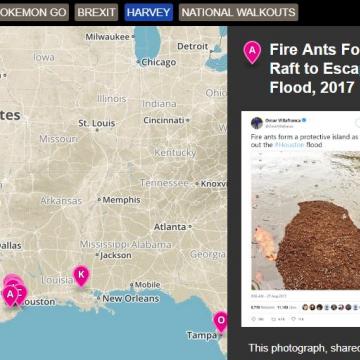
News or Noise? Media Map
News or Noise? Media Map
- Which artifacts were easiest to categorize as news or not? Hardest? Why?
- Which artifacts did you struggle with or change your mind about? What qualities made it hard to tell if those artifacts were news or not?
- For artifacts that you struggled to label: What more would you need to see, know or do to categorize it?
- Which characteristics of news were you able to spot quickly? Which ones required more time?
- How can you use this method in your daily life? Why is it important to be able to tell the difference between news and all the other types of content?
Breaking News
Watch the “Ask an Expert: Breaking News” video featuring NPR managing editor Sara Kehaulani Goo. Ask students to discussion the tension between being right and being first. Why do media outlets want to be the first to break a story? What pressures do they face from other outlets — and from news consumers? Then, as a class, select a topic to analyze. Compare and contrast breaking news coverage of this topic from at least three media outlets. What’s the same? What’s different? Repeat with updated stories on the following day. Has any information changed? Been added? Do you think any of the outlets reported too much originally, or too quickly? Why or why not?
A Closer Look at News and Opinion
As a class, create a list of current events, with a focus on events or issues that have generated some controversy and diverging opinions. Individually or in small groups, students select a topic to focus on. They should create a collection of at least three news stories and three opinion pieces about the topic (using the Is It News? poster to help them identify the correct content). After reviewing their collections, they write a short essay comparing and contrasting the news and opinion content, and explaining the role of each in becoming fully informed about the topic.
-
Common Core State Standards: CCSS.ELA-LITERACY.CCRA.R.1
Read closely to determine what the text says explicitly and to make logical inferences from it; cite specific textual evidence when writing or speaking to support conclusions drawn from the text. -
Common Core State Standards: CCSS.ELA-LITERACY.CCRA.R.7
Integrate and evaluate content presented in diverse media and formats, including visually and quantitatively, as well as in words. -
Common Core State Standards: CCSS.ELA-LITERACY.CCRA.SL.1
Prepare for and participate effectively in a range of conversations and collaborations with diverse partners, building on others' ideas and expressing their own clearly and persuasively. -
Common Core State Standards: CCSS.ELA-LITERACY.CCRA.SL.2
Integrate and evaluate information presented in diverse media and formats, including visually, quantitatively, and orally. -
Common Core State Standards: CCSS.ELA-LITERACY.CCRA.W.1
Write arguments to support claims in an analysis of substantive topics or texts using valid reasoning and relevant and sufficient evidence.
-
NCSS C3 Framework: D1.5.6-8 and D1.5.9-12
6 - 8: Determine the kinds of sources that will be helpful in answering compelling and supporting questions, taking into consideration multiple points of views represented in the sources. 9 - 12: Determine the kinds of sources that will be helpful in answering compelling and supporting questions, taking into consideration multiple points of view represented in the sources, the types of sources available, and the potential uses of the sources.
-
ISTE: 2. Digital Citizen
Students engage in positive, safe, legal and ethical behavior when using technology. -
ISTE: 3a. Knowledge Constructor
Students plan and employ effective research strategies to locate information and other resources. -
ISTE: 3b. Knowledge Constructor
Students evaluate the accuracy, perspective, credibility and relevance of information, media, data or other resources. -
ISTE: 3c. Knowledge Constructor
Students create collections of artifacts that demonstrate meaningful connections or conclusions. -
ISTE: 3d. Knowledge Constructor
Students build knowledge by actively exploring real-world issues and problems. -
ISTE: 6c. Creative Communicator
Students communicate complex ideas by creating or using a variety of digital objects. -
ISTE: 7c. Global Collaborator
Students contribute constructively to project teams, assuming various roles and responsibilities to work effectively toward a common goal.
-
National Council of Teachers of English: NCTE.6
Students apply knowledge of language structure, language conventions (e.g., spelling and punctuation), media techniques, figurative language, and genre to create, critique, and discuss print and non-print texts.
